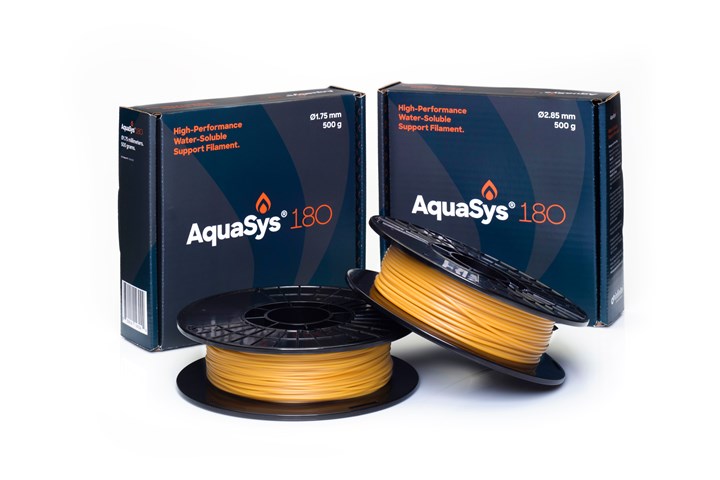Infinite Material Solutions presents water-soluble support material for 3D-printing capabilities
AquaSys 180 is compatible with high-temperature thermoplastics and holds an advantage for the Fused Filament Fabrication (FFF) 3D printing process.

Photo Credit: Infinite Material Solutions
(Prescott, Wis., U.S.), a material design company focused on additive manufacturing, presents its water-soluble 3D printing support material AquaSys 180. Built for exceptional temperature stability, the material is compatible with high-temperature thermoplastics such as polyetheretherketone (PEEK) and polyetherimide (PEI) and can be printed at chamber temperatures up to 180°C. Further, the support material significantly reduce the cost and time of downstream processing, and is said to enable complete design freedom.
According to the company, AquaSys 180 provides an apparent advantage to companies that use Fused Filament Fabrication (FFF) to print parts made from high-temperature thermoplastics. Until now, says the company, printing parts with this process required that each part be printed with support structures made from materials that either needed to be removed manually, or dissolved with harmful solvents. AquaSys 180, however, enables users to dissolve support structures with warm water, leaving behind a finished part with minimal residue.
Related Content
-
Combining multifunctional thermoplastic composites, additive manufacturing for next-gen airframe structures
The DOMMINIO project combines AFP with 3D printed gyroid cores, embedded SHM sensors and smart materials for induction-driven disassembly of parts at end of life.
-
Eaton developing carbon-reinforced PEKK to replace aluminum in aircraft air ducts
3D printable material will meet ESD, flammability and other requirements to allow for flexible manufacturing of ducts, without tooling needed today.
-
Formula 1 team adopts Roboze 3D printed composites
The Visa Cash App RB Formula 1 team is collaborating with Roboze to reduce weight and create parts with complex geometries via carbon fiber/PEEK.



